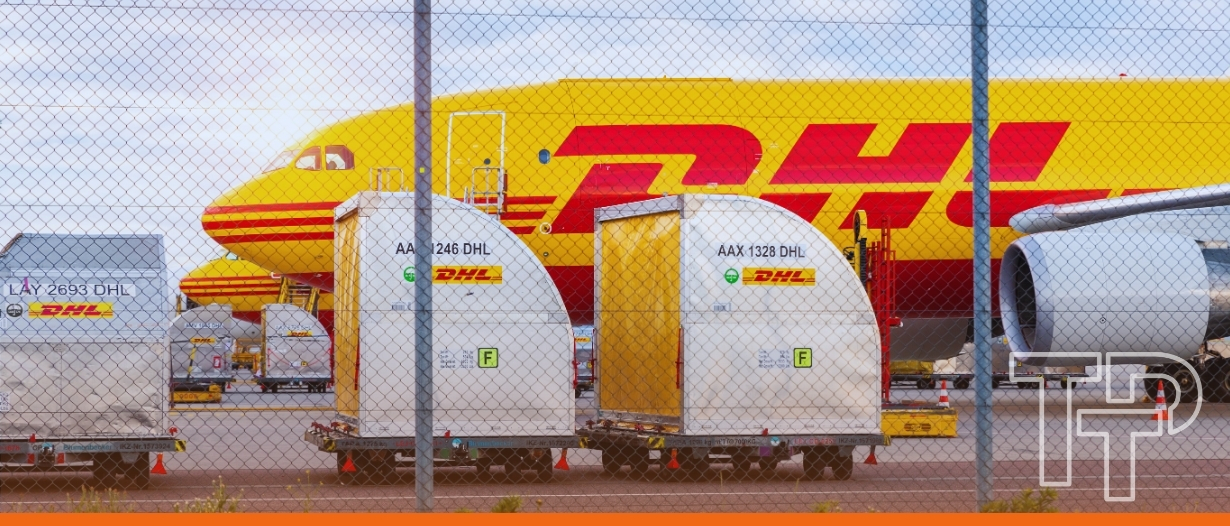PODCAST | Cross-border payments at a crossroad
Alan Koenigsberg
Jun 07, 2025
 Carter Hoffman
Apr 09, 2025
Carter Hoffman
Apr 09, 2025

DHL, a global logistics company, has released its Trade Atlas 2025: Mapping the shifting landscape of global trade.
Written in collaboration with researchers from NYU Stern School of Business, the 292-page report aims to guide business leaders and policymakers through global trade dynamics by providing context for the forces driving the global economy.
Both the report and its interactive webpage accompaniment provide many valuable insights. These are our top takeaways.
Donald Trump’s election into a second term as the President of the USA has brought an increase in protectionist rhetoric and made tariffs and trade policy a renewed topic of mainstream conversation.
Despite the uncertainty that President Trump’s chaotic barrage of tariff threats has brought to the global economy, trade growth remains resilient, according to the report. The report’s baseline forecast (which covers a scenario where some, but not all of the Trump Administration’s proposed tariffs are implemented) projects global merchandise trade volumes to grow at 3.1% annually between 2024 and 2029, slightly faster than in the previous decade (2.0%)
Even in the report’s extreme tariff scenario (where all of the proposed US tariffs come into force, including up to 45% on China and 15% globally) global trade is expected to grow, though at a slower rate (around 9-10% lower by 2031 compared to baseline).

This resilience aligns with precedence. Historically, global trade volumes have consistently rebounded after major disruptions. Despite significant shocks such as the 2008 Global Financial Crisis, the US-China trade conflict, the COVID-19 pandemic, and more recent geopolitical disruptions from the wars in Ukraine and Gaza, global trade volumes have quickly recovered to pre-crisis growth trajectories, without sustaining long-term declines.
Over the past decade, there has been much rhetoric around the notion that deglobalisation will give rise to a series of geopolitical trading blocs amid a push to nearshore supply chains. The data from the report seem to indicate that this is not occurring.
Over the first nine months of 2024, the global average distance traversed by trade in goods was the largest on record (5000 km), with the lowest recorded share of trade (51%) taking place within major geographic regions.

Also of note, are US-China trade tensions. On the surface, it appears that US imports from the Asian giant have dropped considerably, with direct imports falling from 22% in 2017 to 13% in 2024, but these figures do not tell the whole story. Indirect Chinese content entering the USA through third-party countries grew, showing limited meaningful “decoupling” between the two nations.
Trade within their respective geopolitical blocs, however, remains dominant, with 40% of total global trade occurring within the trading blocs that are either aligned to the USA (36% of the total) or China (4%).
Conversely, countries that are geopolitically neutral, like the UAE, India, or Viet Nam, continue to expand their shares of global trade.
The DHL Trade Atlas explores trade growth opportunities by examining trade growth along two dimensions: speed and scale.
Speed refers to how fast a country’s trade volume is expanding (i.e., its annualized trade volume growth rate), while scale refers to the absolute change in the amount of goods traded by a country (i.e., the difference between its starting and ending trade volumes).
Looking back at the period from 2019 to 2024, The United Arab Emirates (UAE), Vietnam, and Ireland were the only countries identified by the report as being among the top 30 ranked for both speed and scale. Looking ahead, India, Vietnam, Indonesia, and the Philippines are the nations forecast to be among the top 30 on both of these dimensions between now and 2029.

Higher-income regions like Europe, despite slower growth rates, are expected to have a considerable absolute contribution (30%) to overall global trade growth from 2024 to 2029. Much of this can be attributed to the rapid growth of cross-border e-commerce, which expanded from $1.9 trillion in 2016 to $2.9 trillion in 2022 and is expected to maintain growth rates of 15–25% annually, driven by mobile commerce and digital payments innovation.
In terms of the sectors with the most potential, manufactured goods to the scale with 25% of the total goods traded falling within this category. Shifts in market dynamics, however, have boosted trade in mineral fuels, electrical machinery, and pharmaceuticals, driven in part by global price fluctuations.
Actual global trade volumes seem to be ignorant of the wave of tariff uncertainty and doom-touting rhetoric, remaining resilient. Perhaps there is even room for further integration, especially given that, currently, only 21% of global production crosses international borders.
For those looking to explore the insights of the DHL Trade Atlas 2025 in more detail, we strongly encourage visiting the report’s website. Their interactive tools allow viewers to explore the data and garner their own insights into how the trading world is changing.

Tod Burwell
Jun 06, 2025
Trade Treasury Payments is the trading name of Trade & Transaction Finance Media Services Ltd (company number: 16228111), incorporated in England and Wales, at 34-35 Clarges St, London W1J 7EJ. TTP is registered as a Data Controller under the ICO: ZB882947. VAT Number: 485 4500 78.
© 2025 Trade Treasury Payments. All Rights Reserved.